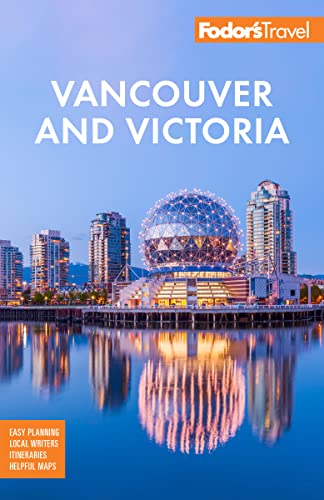Victoria: Whale-Watching
The thrill of seeing whales in the wild is, for many, one of the most enduring memories of a trip to Victoria. In summer (roughly April to October), about 85 orca, or "killer whales," reside in the Strait of Georgia between Vancouver and Victoria. They live in pods, and because their movements are fairly predictable, chances are high that you will see a pod on any given trip. Some operators claim sighting rates of 90%; others offer guaranteed sightings, meaning that you can repeat the tour free of charge until you spot a whale.
It's not unheard of to see whales from a BC ferry en route to Victoria—but the ferries don't alter their routes to take advantage of whale-watching, so your best bet is to take a dedicated tour. A number of companies leave from Victoria's Inner Harbour, a few are based in Richmond (near Vancouver), and others leave from Sidney and Sooke, outside of Victoria.
Not all tours are alike, and the kind of boat you choose determines the kind of experience you're likely to have—though most companies have naturalists on board as guides, as well as hydrophones that, if you get close enough, allow you to listen to the whales singing and vocalizing.
Motor launches, which carry from 30 to 80 passengers, are comfortable, with restrooms, protection from the elements, and even concessions. Seasickness isn't usually a problem in the sheltered waters near Victoria, but if you're not a good sailor, it's wise to wear a seasickness band or take antinausea medication. Ginger candy often works, too.
Zodiacs are open inflatable boats that carry about 12 passengers. They are smaller and more agile than cruisers and offer both an exciting ride bouncing over the waves and an eye-level view of the whales. Passengers are supplied with warm, waterproof survival suits. Zodiac tours are not recommended for people with back or neck problems, pregnant women, or small children.
Note that the kind of boat you choose does not affect how close you can get to the whales. For the safety of whales and humans, government and industry regulations require boats to stay at least 100 meters (328 feet) from the pods, though closer encounters are possible if whales approach a boat when its engine is off.
And, although the focus is on whales, you also have a good chance of spotting marine birds, Dall's porpoises, dolphins, seals, sea lions, and minke, gray, and humpback whales as well as other marine life. And, naturally, there's the scenery of forested islands and distant mountains.
Johnstone Strait, off Telegraph Cove on Vancouver Island's northeast coast, has one of the world's largest populations of orca in summer and is an important center for whale research. Tofino and Ucluelet, on the island's west coast, draw whale-watchers every March and April when an estimated 20,000 Pacific gray whales cruise by on their annual migration.
There are dozens of whale-watching operators in the area. The following recommendations are among the more established: Orca Spirit Adventures, Prince of Whales, and Springtide Whale Tours & Charters.




